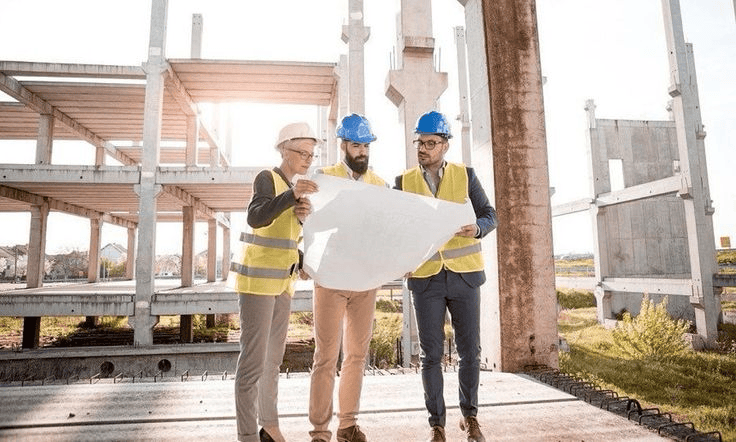Accurate cost planning is one of the most important parts of any construction project. Whether you are building a small home, renovating a commercial space, or managing a large-scale development, the success of your project depends heavily on proper cost estimation. That is why many contractors rely on Construction Estimating Services to ensure accuracy, save time, and avoid costly mistakes.
A professional Construction Estimator follows a structured, step-by-step approach to deliver an accurate and reliable cost breakdown. This article explains the complete process of Construction Estimation so contractors can understand how estimates are prepared and why each step is important.
Why Construction Estimating Services Matter
Before diving into the steps, it’s important to understand why these services are essential. Construction projects involve many moving parts—materials, labor, equipment, overhead, and unexpected issues. Without an accurate estimate, contractors risk losing profits, overbidding or underbidding, and facing serious project delays.
Professional Construction Estimating Services give contractors clarity, confidence, and control. They help you plan better, bid smarter, and manage your resources efficiently. Now let’s break down how estimators achieve this level of accuracy.
✅ Step 1: Reviewing Plans, Drawings, and Project Specifications
The first step in the process is reviewing the project documents. A Construction Estimator carefully examines architectural drawings, structural plans, and engineering details. They also review the project’s written specifications, which outline the materials, finishes, and methods required.
This step ensures the estimator understands:
- The project scope
- Design requirements
- Technical details
- Any special materials or systems
Without a detailed review, the entire estimate can be inaccurate. That’s why professionals take their time during this stage.
✅ Step 2: Performing a Detailed Quantity Takeoff
A quantity takeoff (QTO) is the heart of Construction Estimation. This step involves measuring and counting everything needed for the project, including:
- Concrete
- Steel and rebar
- Lumber
- Flooring
- Electrical fixtures
- Plumbing materials
- Finishes
- HVAC components
Professional Construction Estimating Services use digital takeoff software to ensure accuracy. This technology allows estimators to measure directly from digital plans, reducing human error and speeding up the process.
The result is a precise list of materials required for the project.
✅ Step 3: Calculating Material Costs
Once all quantities are measured, the estimator calculates the cost of materials. They gather real-time pricing from suppliers, local markets, or historical cost databases. This ensures the estimate reflects current market conditions.
Material pricing includes:
- Base cost per unit
- Delivery charges
- Taxes
- Waste factors
Because prices fluctuate often, working with a professional estimator ensures contractors always receive the most accurate material cost data.
✅ Step 4: Estimating Labor Requirements and Costs
Labor is one of the biggest expenses in construction, so calculating it correctly is crucial. A Construction Estimator determines:
- How many workers are needed
- Skill levels required
- Labor hours needed
- Local labor rates
They also consider factors like project difficulty, site conditions, and worker productivity. Accurate labor estimation prevents cost overruns and helps contractors schedule crews effectively.
✅ Step 5: Determining Equipment and Machinery Costs
Construction projects often require specialized tools, machinery, or heavy equipment. Estimators calculate:
- Equipment rental costs
- Fuel consumption
- Operator costs
- Maintenance fees
- Duration of equipment use
This step ensures contractors budget correctly for cranes, excavators, scaffolding, lifts, and other essential machines.
✅ Step 6: Adding Overheads, Soft Costs, and Profit Margin
After material, labor, and equipment costs are calculated, the estimator adds indirect costs such as:
- Insurance
- Permits
- Supervision
- Jobsite utilities
- Office expenses
- Safety equipment
These are known as overhead and soft costs. To complete the estimate, a profit margin is added to ensure the contractor earns a healthy return.
Professional Construction Estimating Services ensure these costs are calculated realistically and not overlooked.
✅ Step 7: Identifying Risks and Including Contingencies
Every construction project comes with risks—weather delays, material price increases, design changes, or unexpected site issues. A skilled Construction Estimator identifies these risks and includes a contingency amount in the estimate.
This safeguards the contractor from budget overruns and provides financial protection throughout the project.
✅ Step 8: Preparing the Final Construction Estimation Report
With all data collected, the estimator compiles a complete Construction Estimation report. This document includes:
- Detailed cost breakdown
- Material quantities
- Labor and equipment summaries
- Overhead and profit
- Total project cost
- Notes and assumptions
The final estimate is organized, clear, and easy to understand—making it a valuable tool for planning, decision-making, and project management.
✅ Step 9: Reviewing and Quality-Checking the Estimate
Before submitting the estimate, professional Construction Estimating Services conduct a thorough review. They check for:
- Calculation errors
- Missing items
- Inconsistent data
- Updated pricing
This quality check ensures the final estimate is accurate, competitive, and ready for bidding.
Why Contractors Should Use Professional Construction Estimating Services
Hiring experts provides many benefits, including:
- Better bid accuracy
- Time savings
- Increased profitability
- Reduced estimating errors
- Faster turnaround times
- Access to experienced Construction Estimators
Whether for small jobs or large projects, outsourcing estimation helps contractors stay competitive and organized.
Final Thoughts
The construction industry is highly competitive, and success depends on preparation and accuracy. By following a structured, step-by-step estimating process, professional Construction Estimating Services deliver precise and dependable results.
A skilled Construction Estimator ensures that every detail—from materials to labor to contingencies—is accounted for. This level of accuracy allows contractors to bid confidently, plan effectively, and complete projects profitably.
If you want to improve efficiency, reduce risks, and win more bids, investing in professional Construction Estimation is one of the smartest decisions you can make.







